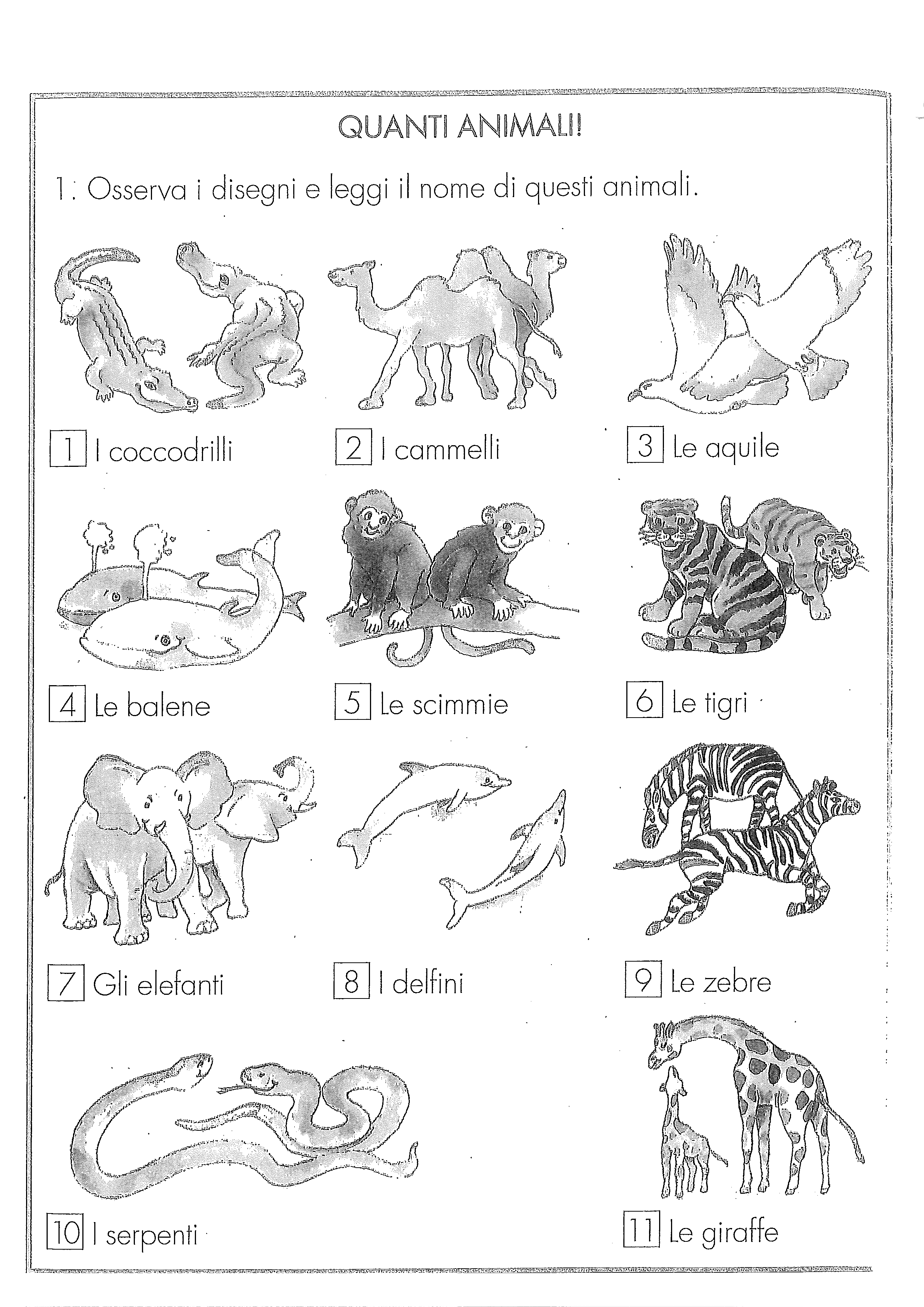- Home
- Resources
- Work samples
- Samples
- Quanti animali - AT
Languages: Italian
Years 5 and 6
Satisfactory
Quanti animali
Summary of task
Students had completed a unit of work on animals learning the vocabulary to name them and adjectives to describe their characteristics. Students had learned that many animals in Italian have similar names in English and discussed how cognates can help in understanding both spoken and written Italian.
Students were asked to match the description of animals in Italian to the correct animal. Students were directed to focus on the cognates in the descriptions in order to match the animal correctly.
Achievement standard
By the end of Year 6, students interact using spoken and written Italian to describe and give information about themselves, family, friends, home and school routines, experiences, interests, preferences and choices. They share aspects of their environment, express opinions, for example, È buonissimo ...è molto bravo, mi piace di più ..., penso di sì/no, secondo me..., accept or reject ideas, agree and disagree, for example, No,non sono d’accordo! Hai ragione/torto. They ask simple questions, for example, Ti piace? Cosa prendi? Chi viene alla festa? Vieni anche tu? They understand the main points in spoken interactions consisting of familiar language in simple sentences. When speaking, they imitate pronunciation and intonation. They understand short written texts with some variation in sentence structures and some unfamiliar vocabulary. In reading independently, they begin to use context, questioning, and bilingual dictionaries to decode the meaning of unfamiliar language. They connect ideas in different informative and creative texts, expressing and extending personal meaning by giving reasons or drawing conclusions. Students create sentences with some elaboration, for example, using coordinating conjunctions and comparisons to build short coherent texts on familiar topics, for example, La musica di ... è bella, ma mi piace di più ... They write descriptions, letters, messages, summaries, invitations and narratives. They use the present tense of verbs, noun and adjective agreements and some adverbs; they choose vocabulary appropriate to the purpose of the interaction, such as to describe, to plan or to invite.
Students use some metalanguage to talk about both linguistic and cultural features. They discern familiar patterns and features of written and spoken language and compare them with English, understanding that language, images and other features of texts reflect culture. They demonstrate an understanding of variation in language use, adapting language forms according to audience and context. They identify linguistic and cultural differences know that Australia is a multilingual and multicultural society, and that dialects are spoken both in Italy and in Italian-speaking communities around the world. Students compare, identify and discuss their responses and reactions in intercultural exchanges.

 1
Annotation 1
1
Annotation 1
Understands regular and common irregular present tense verbs in third person plural 2 Annotation 2
Recognises cognates reflecting location in order to select correct response from alternatives provided 3 Annotation 3
Uses knowledge of adjectives to correctly identify description of animal 4 Annotation 4
Associates common stereotype description for animal, eg 'mangiano banane' 5 Annotation 5
Demonstrates understanding of 'issimo' suffix and body part 'collo' to match description appropriately
-
Annotations
-
1
Annotation 1
Understands regular and common irregular present tense verbs in third person plural -
2
Annotation 2
Recognises cognates reflecting location in order to select correct response from alternatives provided -
3
Annotation 3
Uses knowledge of adjectives to correctly identify description of animal -
4
Annotation 4
Associates common stereotype description for animal, eg 'mangiano banane' -
5
Annotation 5
Demonstrates understanding of 'issimo' suffix and body part 'collo' to match description appropriately